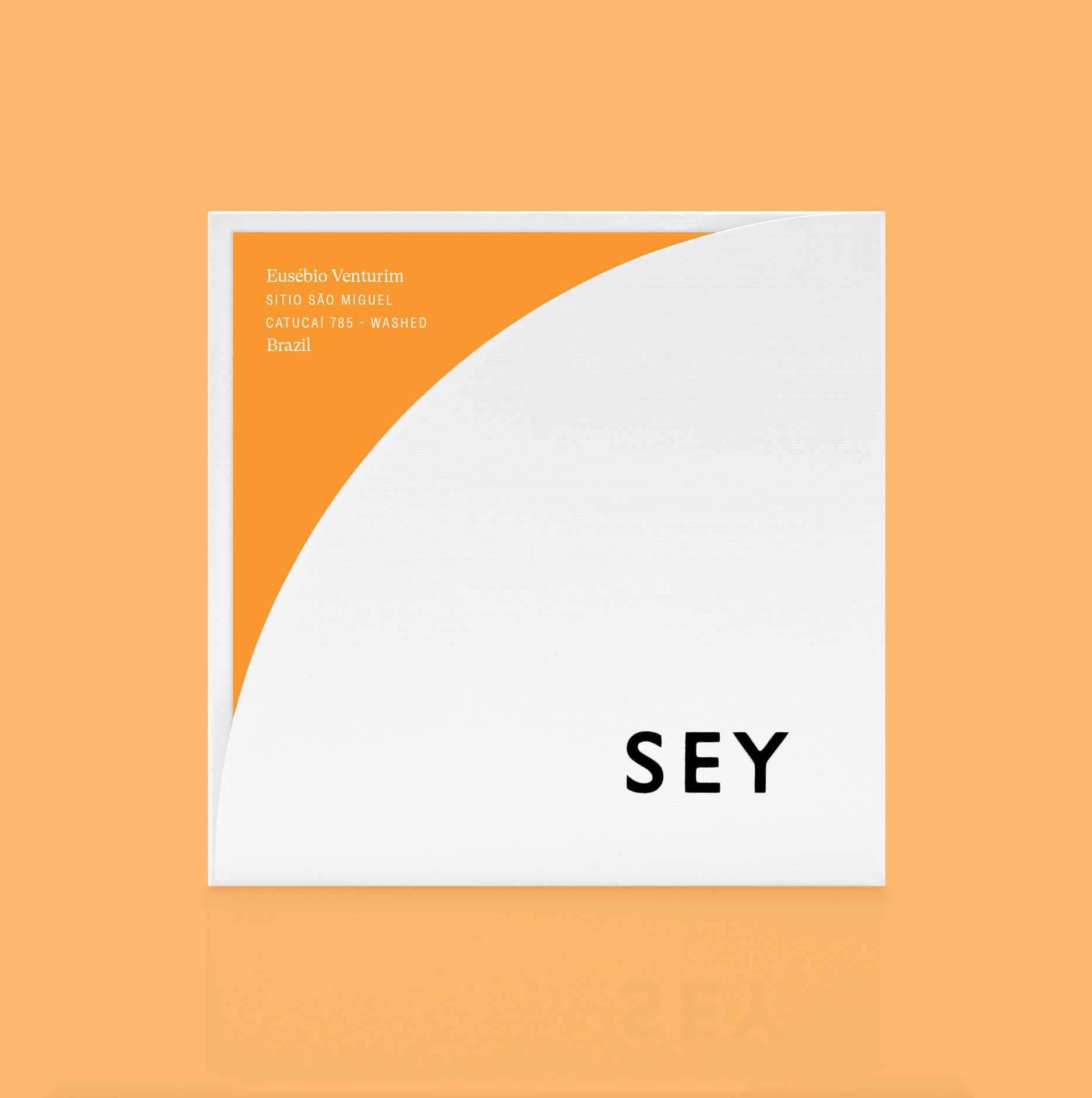
This is another stunning lot from Espírito Santo, Brazil, and highlights the delightful complexity the terroir of this region is capable of producing. In the cup we find lemon oil, blueberry, and white tea.
Catucaí 785
Domingos Martins, Espírito Santo
1,000 masl
October, 2020
Hand picked at peak ripeness. Floated to further remove defects. Depulped. Fermented. Dried on patios until moisture content reaches between 10%-11%.
ABOUT EUSÉBIO VENTURIM
Eusébio comes from a traditional coffee producing family with a long history in Espírito Santo. However, given the historically low prices and unstable market for coffee, Eusébio started working in the marble business—an industry in which Espírito Santo is world-renowned. Today, Eusébio's sons run the marble business and he has returned to tending the farm and growing coffee. He is dedicated and passionate about his farm, and is learning how to taste his own coffees as well; a skill that is sadly quite rare amongst coffee growers.
ABOUT CATUCAÍ VERMEHLO 785
Catucaí Vermelho 785 is a progeny of Icatú Vermelho and Catuaí Vermelho, and within the Bourbon lineage. It is a small uniform plant with wavy-edged leaves, and bronze-hued new growth. It is high-yielding, produces large red fruit with a large sieve rating, and is both highly leaf-rust tolerant and remarkably stable in varied weather conditions. While generally an early-harvest plant, in certain climates fruit development begins early but slows significantly—a trait that has been utilized to extend fruit maturation and improve cup quality by some of the more astute producers in compatible regions.
Pricing Details
FARM GATE (LOCAL)
20.00 BRL/KG
FARM GATE (USD)
$3.84/KG
FOB
$9.35/KG
FOT
$11.00/KG
The cost of getting a coffee from cherry to beverage varies enormously depending on its place of origin and the location of its consumption. The inclusion of price transparency is a starting point to inform broader conversation around the true costs of production and the sustainability of specialty coffee as a whole.